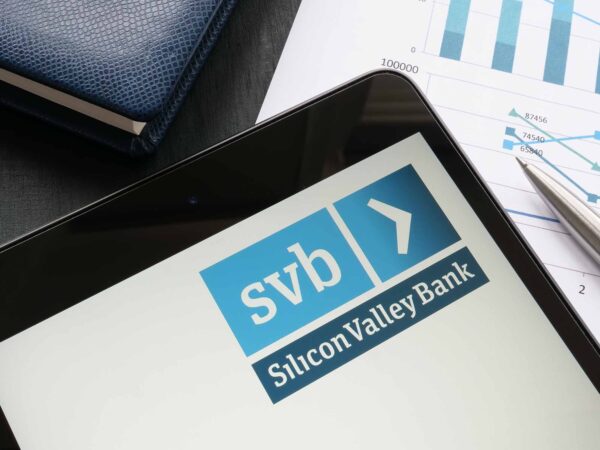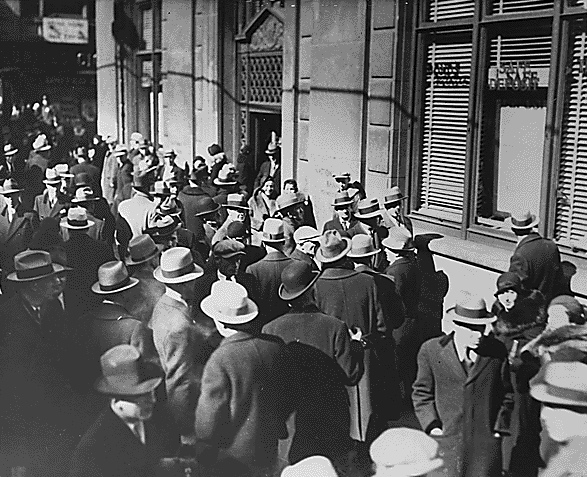What You Need to Know About the Recent Bank Failures Hitting the US
On March 10, Silicon Valley Bank (SVB) was shut down by banking regulators. This was the second-largest bank collapse in U.S. history, only behind the collapse of Washington Mutual in 2008 during the financial crisis. Signature Bank was shut down on March 12. First Republic Bank was seized by regulators on May 1. Worse yet, Weiss Ratings is now warning that 4,243 U.S. banks and credit unions are vulnerable to fail. Weiss Ratings—the nation’s only independent ratings agency that assesses the safety and risks of U.S. banks and credit unions—has now issued a red warning flag for 1,210 institutions that are at risk for imminent failure. In addition, 3,043 were issued a yellow warning flag; in total, 45 percent of all banks and credit unions in the United States have been deemed vulnerable.
Since the sudden closures, many bank customers have wondered about the safety of their deposits. Here’s what you need to know about what happened and how to protect your hard-earned money.
How Did We Get Here?
The financial crisis of 2008–09 was spurred by massive loan defaults in the real estate market, which ultimately led to the failure of several large banks.
As a result, interest rates in the United States were kept at ultra-low levels to make it easier for companies to borrow money (and spend it) and keep the economy going.
This worked for several years. Even while inflation slowly ticked up, low interest rates made borrowing money relatively cheap so that businesses could keep growing and people could keep spending.
Pandemic Stimulus Leads to Massive Savings
The national lockdowns during the pandemic caused many people to either get furloughed or be let go from their jobs. Many small businesses had to shut their doors without knowing when or how they would be able to open again—or if they would be able to pay their employees.
To prop up the economy, the federal government started printing money. Individual taxpayers received pandemic payments, and businesses received Paycheck Protection Program (PPP) loans to help keep paying employees and keep the lights on.
With all this extra stimulus money and nowhere to spend it, many banks saw their deposits increase anywhere between 50 percent and 100 percent over the regular savings rate.

Keep Raising Rates Until Something Breaks
Inflation has been on the rise because of the influx of trillions of dollars in cash from the pandemic stimulus and loose fiscal policy.
Federal Reserve chair Jerome Powell and his colleagues have raised interest rates incrementally in an attempt to combat inflation. With that rise in interest rates, it has become harder for borrowers to afford loans.
Banks make money by lending out deposits and earning on the interest. With fewer borrowers, banks need another way to generate revenue. So many banks took their deposits and invested them in long-term bonds. Normally, these bonds are safe securities.
But when many depositors take their funds out all at once, banks need to sell assets to meet depositor requests.
The Perfect Storm: Regional Banks at Risk
Silicon Valley Bank catered to the tech industry, working closely with over 2,500 venture capital firms.
Like many other banks, Silicon Valley Bank invested deposits into long-term bond funds. As interest rates rose, the long-term bonds they held lost value. This wouldn’t have been a problem if SVB could simply hold them until maturity.
Why would an investor keep their deposits at a small or mid-sized bank when they can get a better return at one of the giants? Bank members began withdrawing their funds from SVB. This meant that SVB had to raise liquidity by selling the bonds before they matured.
Similar to the bank run depicted in the film It’s a Wonderful Life, the depositors in SVB started pulling out their funds while they could, causing a total collapse of the bank.

How Much of Your Hard-Earned Money Is Protected?
Most banks are insured by the Federal Deposit Insurance Corporation (FDIC) for up to $250,000 per depositor on specific types of deposit accounts.
FDIC insurance covers checking, savings, and money market deposit accounts; time deposits, such as certificates of deposit (CDs); cashier’s checks, money orders, and other official items issued by the insured bank.
This is adequate protection for most individuals. However, when there is a run on a bank and many depositors try to withdraw their funds at the same time, you may not be able to access your protected funds.
And for companies with high burn rates, this coverage is woefully insufficient. The FDIC has not yet determined how many deposits were uninsured at the time of the bank’s collapse.
With payroll checks in limbo, many startups and companies that relied on Silicon Valley Bank for their payroll are now struggling to pay their employees.
With the guarantee that the government will bail out any potential failures, it destroys any incentive for banking institutions to be responsible with their investments and decisions.
The collapse of First Republic, SVB, and Signature Bank had more combined assets under management than all 25 of the federally insured lenders that failed in 2008. So, while the bailouts and purchases have worked so far, what happens if we see multiple larger banks collapsing together? Will the government have the assets capable of controlling the situation?
Will Bank Failure Be Contagious?
Since then, we’ve seen more institutions failing, and while contagion hasn’t yet spread further, many banks are currently at risk. Add to this the fears of an imminent recession and you have a recipe for even further instability. One thing is for certain: regional banks are the institutions most at risk for SVB and First Republic-style collapses.
Only time will tell what happens next. The Fed can continue raising interest rates at the same pace, putting large financial systems at risk. Or it can pause on raising interest rates, potentially losing control of inflation.
No matter what happens, you as a saver and investor can protect yourself from both market crashes and bank failures with gold.

Get Your FREE Bank Rating Today and Protect Your Funds
Wondering about the rating of your bank? Click here to receive a complimentary bank rating and find out how safe your bank is.
McAlvany’s advisors are here to help you look at your bank, your cash holdings, and your investments to ensure that you stay properly diversified. Just fill out the form and an advisor will reach out with a complimentary consultation. Speak with advisors at: (800)525-9556
Established in 1972, McAlvany Precious Metals is the leading expert in precious metals IRAs, compounding ounces strategies, and relational integrity within the precious metals industry. We utilize experienced advisors that have helped investors determine which precious metals are appropriate for optimized investment objectives for 50 years. Speak with our advisors: (800) 525-9556




